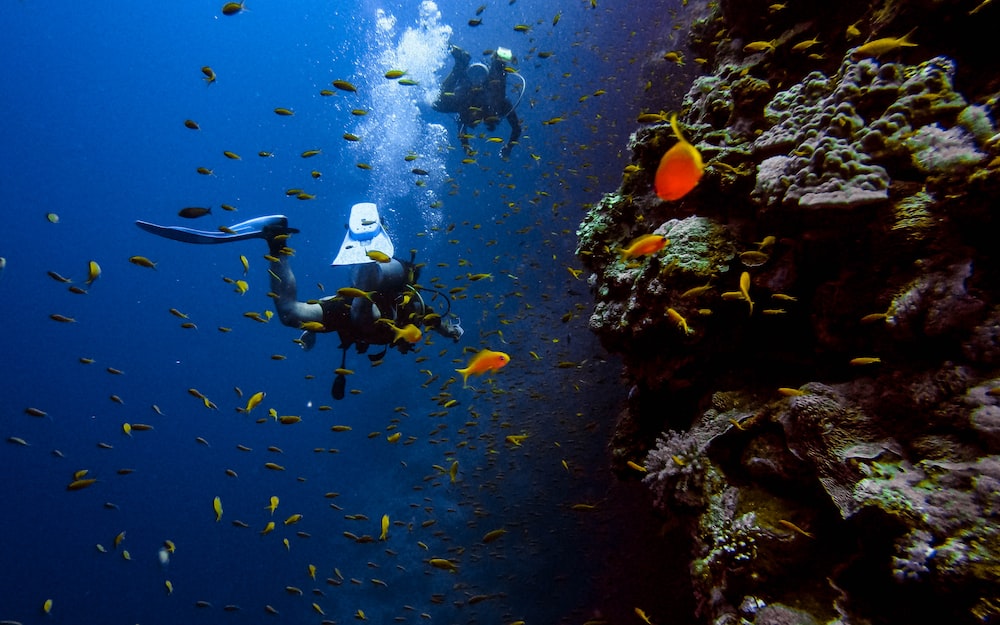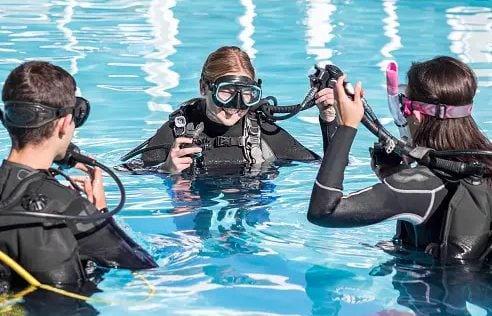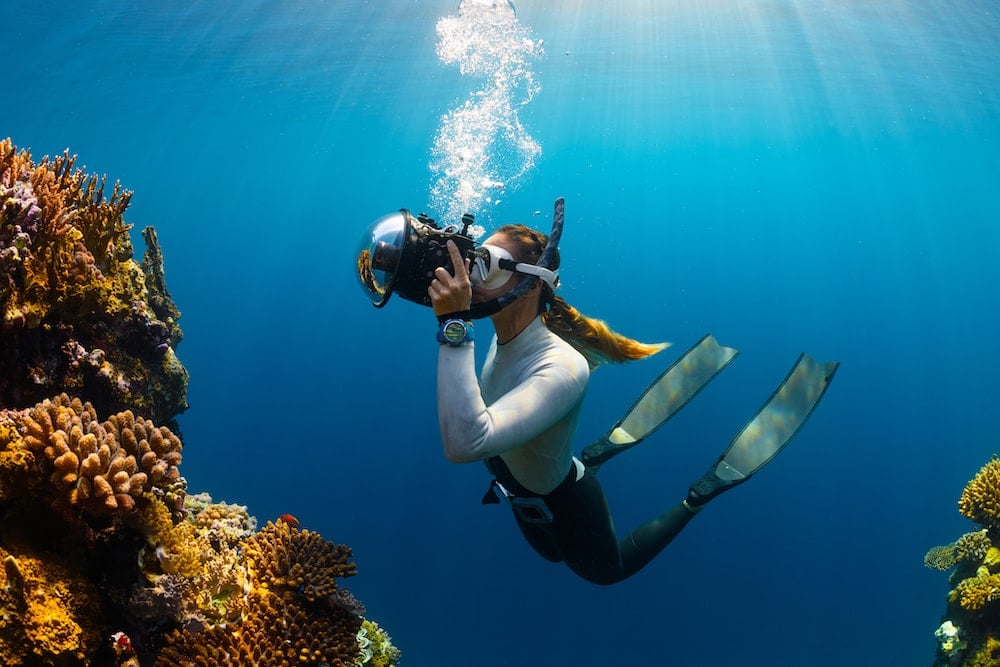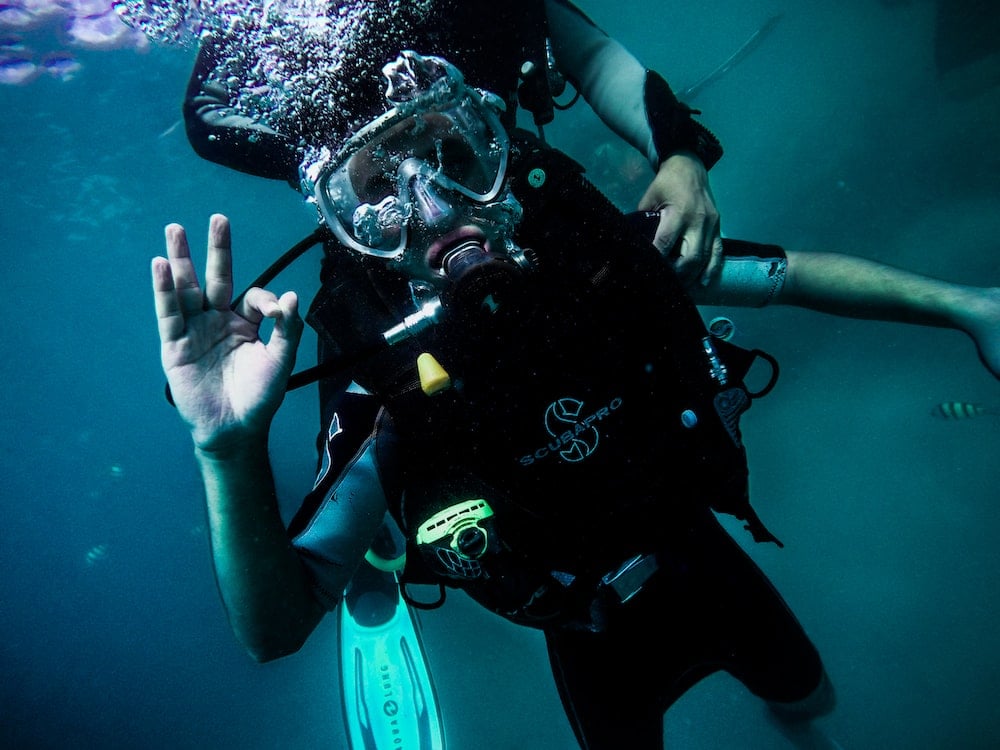BLOGS
Scuba Diving 101: In The Know
Have you ever wondered what it’s like in the underwater world? As the Philippines is renowned for its rich marine biodiversity, vibrant coral reefs, and fascinating dive sites, scuba diving is an incredible experience to try. This article will give you the scuba diving basics, but first, you need to know first what is scuba diving.
Scuba diving is a water activity that allows individuals to explore the underwater world using a self-contained underwater breathing apparatus (scuba). The term “scuba” stands for “Self-Contained Underwater Breathing Apparatus.” Scuba diving is a recreational sport or activity enjoyed by people of various skill levels and interests. Some individuals only scuba dive for leisure and relaxation, while others pursue scuba diving as a hobby, sport, or even a profession. It requires proper training and open water certification to ensure safety and competence in underwater environments.
If you are interested to know more about the guide and other scuba diving basics, keep on reading this article.
Scuba diving basics: What do you need to know about scuba diving?
Make your vacation worthwhile, try new things that will let you see the wonders of nature. Level up your swimming, dive deeper, and meet new friends through recreational scuba diving.
For beginners who want to experience the underwater adventure and see the beautiful creation below the ocean, have fun in honing your diving skills by knowing the scuba diving basics.

-
Scuba Diving Basics
The first thing you need to have are training and certification. It is important to undergo proper scuba diving training and obtain certification from a recognized diving organization. This training will provide you with essential knowledge, skills, and safety procedures for diving. Popular certification agencies include PADI (Professional Association of Diving Instructors) and SSI (Scuba Schools International).
To get your scuba certification, you will need to enroll scuba lessons. The course ranges for about PHP 23,000, inclusive of the classroom and pool as well as the rental of all equipment (BCD, regulator, mask, snorkel, fins, weights, belt, and manuals). You will have the opportunity to design your dive and dive your plan using a dive computer during the open water dives. In order to help you learn all the fundamentals, this three- to four-day course combines sessions in the open ocean and training areas with sandy or pool bottoms. After passing, you’ll be certified to dive with a dive buddy down to a depth of 18 meters, which is perfect for exploring the shallow reefs in the Philippines.
-
Scuba Diving Equipment
A scuba gear and some scuba equipment are essential to execute a safe diving experience. Some of these are provided by scuba diving instructors from your diving school but it can also be rented from most dive shops. Here is a beginner’s guide to what you need when scuba diving.
-
Mask
A diving mask creates an air pocket around your eyes, allowing you to see clearly underwater. It should fit snugly, be made of tempered glass, and have a strap that secures it in place.
-
Fins
Dive gear like fins enable you to move efficiently through the water by providing propulsion. They come in various styles, such as open heel fins that require booties or full-foot fins that can be worn barefoot or with thin socks.
-
Exposure Protection
Depending on water temperature, you may need exposure protection to stay comfortable. This can include wetsuits, which are made of neoprene and provide insulation, or drysuits, which keep you dry by sealing out water and require additional training to use properly.
-
Buoyancy Control Device (BCD)
The BCD is a vest-like device that holds your scuba tank, provides buoyancy control, and allows you to attach other equipment. It has an inflator mechanism to add or release air to achieve neutral buoyancy.
-
Scuba Tank
The scuba tank holds the compressed air or other breathing gas you breathe underwater. Most commonly, tanks are made of aluminum or steel and have a valve to control the flow of air. A usual tank has an air pressure of 3,000 pounds per square inch (psi).
-
Weight System
A weight system helps you achieve proper buoyancy control by compensating for the buoyant effect of your exposure protection and other equipment. It can include a weight belt or integrated weight pockets in your BCD.

-
Scuba diving basics & Signals
Scuba diving signals are hand signals or gestures used by divers to communicate underwater when verbal communication is not possible due to the inability to speak or limited visibility. These signals help divers convey important messages, share information, or indicate potential dangers.
-
Okay
Make a circle with your thumb and index finger and extend the other fingers. This signal indicates that you are okay and asks if your buddy is okay as well.
-
Ascend
Extend your arm upward with a clenched fist and move it upward. This signal indicates the desire to ascend to a shallower depth or to end the dive.
-
Descend
Extend your arm downward with a clenched fist and move it downward. This signal indicates the desire to descend to a deeper depth.
-
Stop
Hold your palm flat and facing downward. This signal indicates that you want to pause or stop the dive temporarily.
-
Out of Air
Tap the top of your head with an open palm. This signal indicates that you or your buddy is out of air and needs to perform the appropriate emergency procedures.
-
Danger or Problem
Point with your index finger to the location of the danger or problem. This signal alerts your buddy or other divers to a potential hazard or issue.

What is the golden rule of scuba diving?
The golden rule of scuba diving is “Always breathe continuously and never hold your breath.” This rule is of utmost importance in scuba diving and is emphasized during training and throughout a diver’s diving career. Here’s why this rule is crucial:
-
Equalizing Pressure
When scuba diving, the pressure increases as you descend into the water. To equalize the pressure in your ears, sinuses, and mask, it is essential to continuously exhale a small amount of air through your nose or mouth. Holding your breath while ascending or descending can lead to painful injuries, such as barotrauma, as the trapped air expands or contracts.
-
Lung Overexpansion Injuries
Holding your breath and ascending rapidly can cause lung overexpansion injuries, known as pulmonary barotrauma. This occurs when air in the lungs expands beyond their normal capacity due to a decrease in pressure during ascent. It can result in serious lung damage, such as a pneumothorax (collapsed lung) or air embolism (air bubbles in blood vessels).
-
Buoyancy Control
Continuous breathing helps in maintaining proper buoyancy control. By controlling your breathing and adjusting the air in your buoyancy control device (BCD), you can achieve neutral buoyancy and effortless movement underwater. Holding your breath can disrupt this balance and make it more challenging to control your position in the water.
-
Gas Exchange and Dive Time
Continuous breathing ensures a steady supply of oxygen and removal of carbon dioxide from your body. By breathing continuously, you optimize gas exchange in your lungs, supporting your body’s oxygen needs while eliminating waste gases. Holding your breath reduces the efficiency of gas exchange and can limit your dive time.

Find your Home near a Dive Site
Now that you have been given the scuba diving basics, we know that you’ll keep on wanting to do recreational diving.
With the wonders of the ocean and the beauty of the marine life, we are sure that you would not just settle with a swim or snorkel just above the water. You will always want to discover more! That is why having a home in Batangas is the answer! It is a home that is close to key destinations, to name the beautiful beaches of Batangas. It has a serene environment and wide-range of amenities that your family can experience.
As new divers, get your scuba gear, enhance your skills, and relax in your new home at Pievana in Santo Tomas, Batangas.
Suggested Read: Taking You Back To Southern American Home Styles
Suggested Read: Leisure Luxury: Boracay Activities You Should Try
Suggested Read: The Luxury Of Personalized Traveling
Suggested Read: What Is Boracay Like For Foreigners
Suggested Read: The Best Diving Spots in Batangas
















